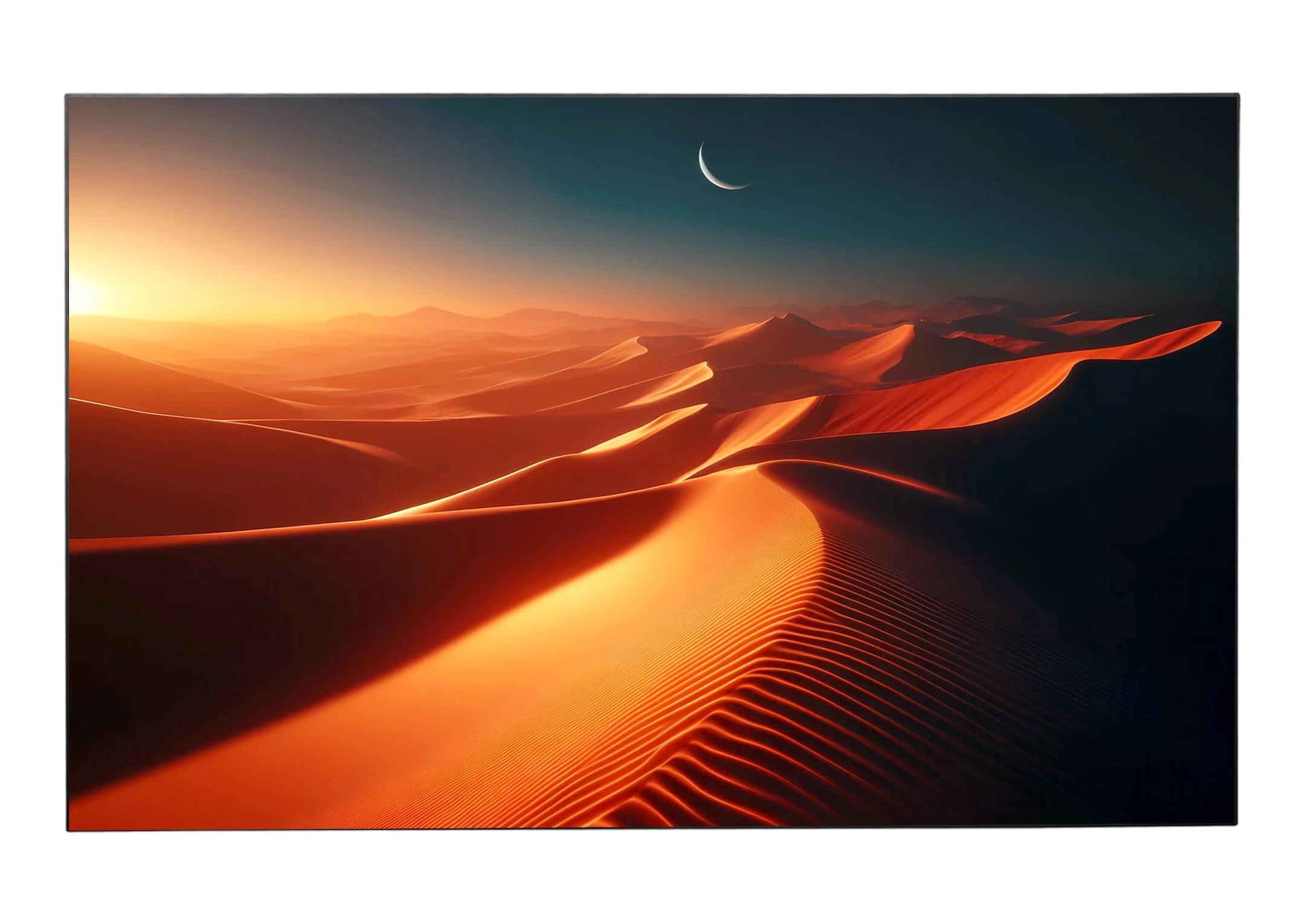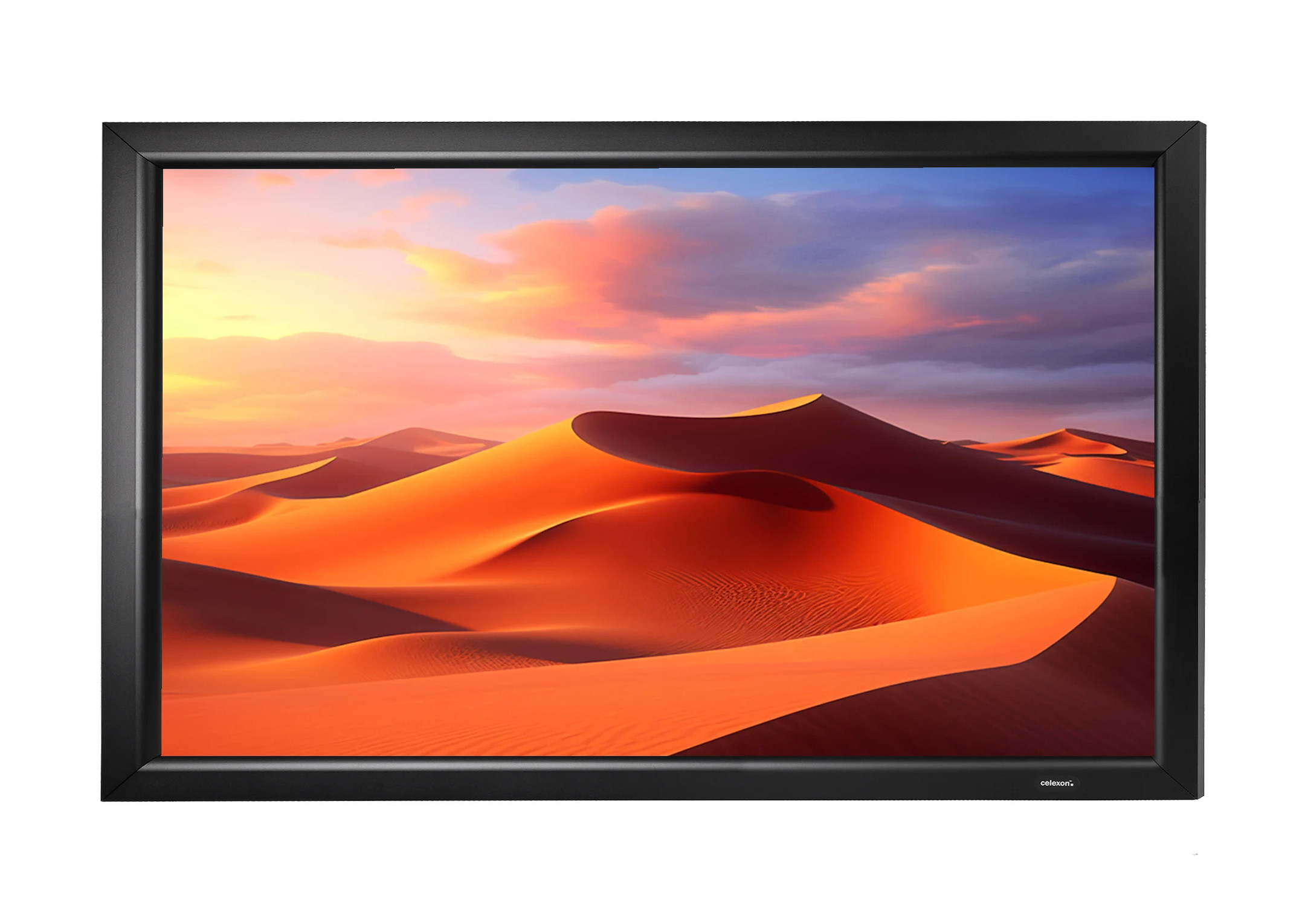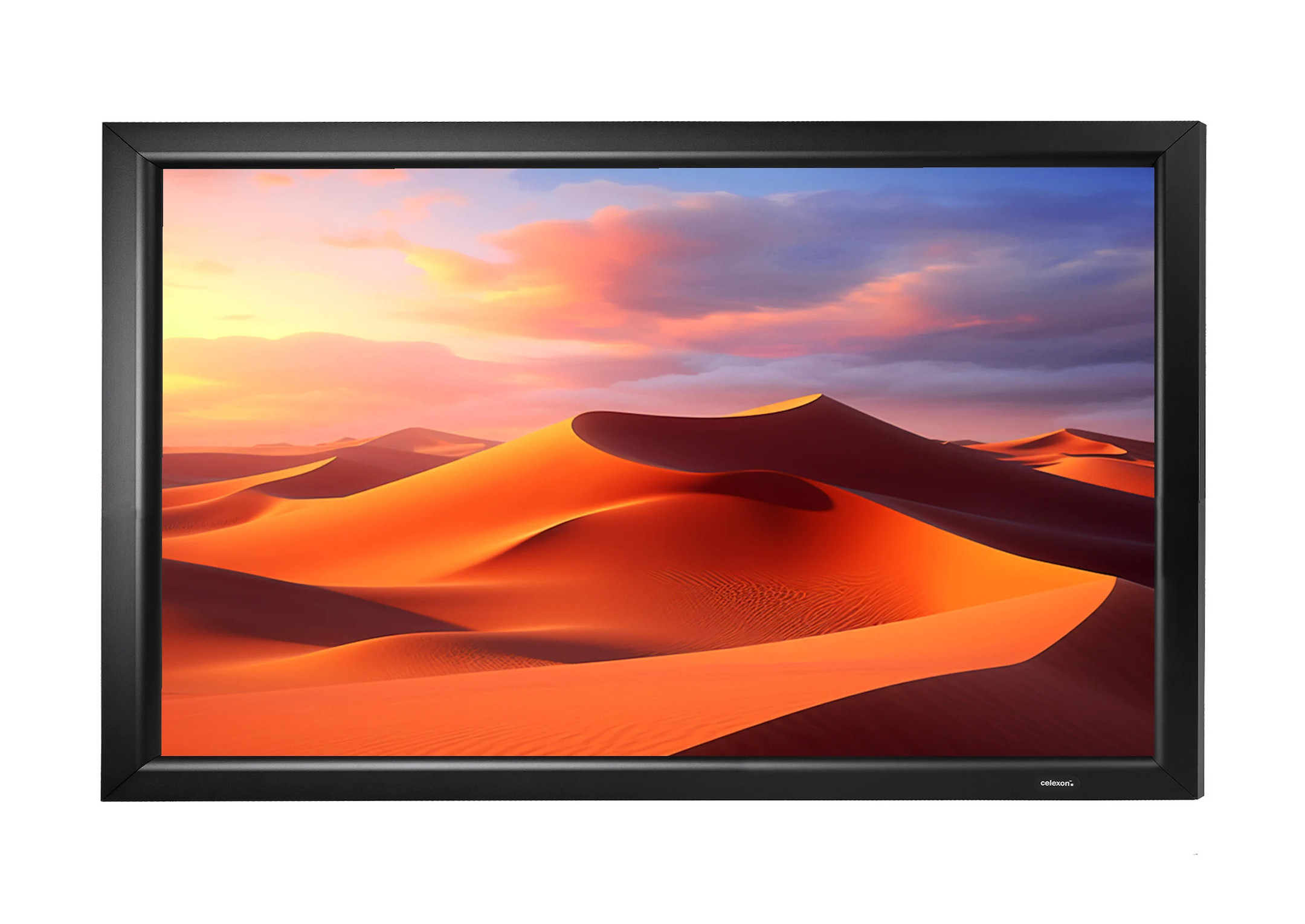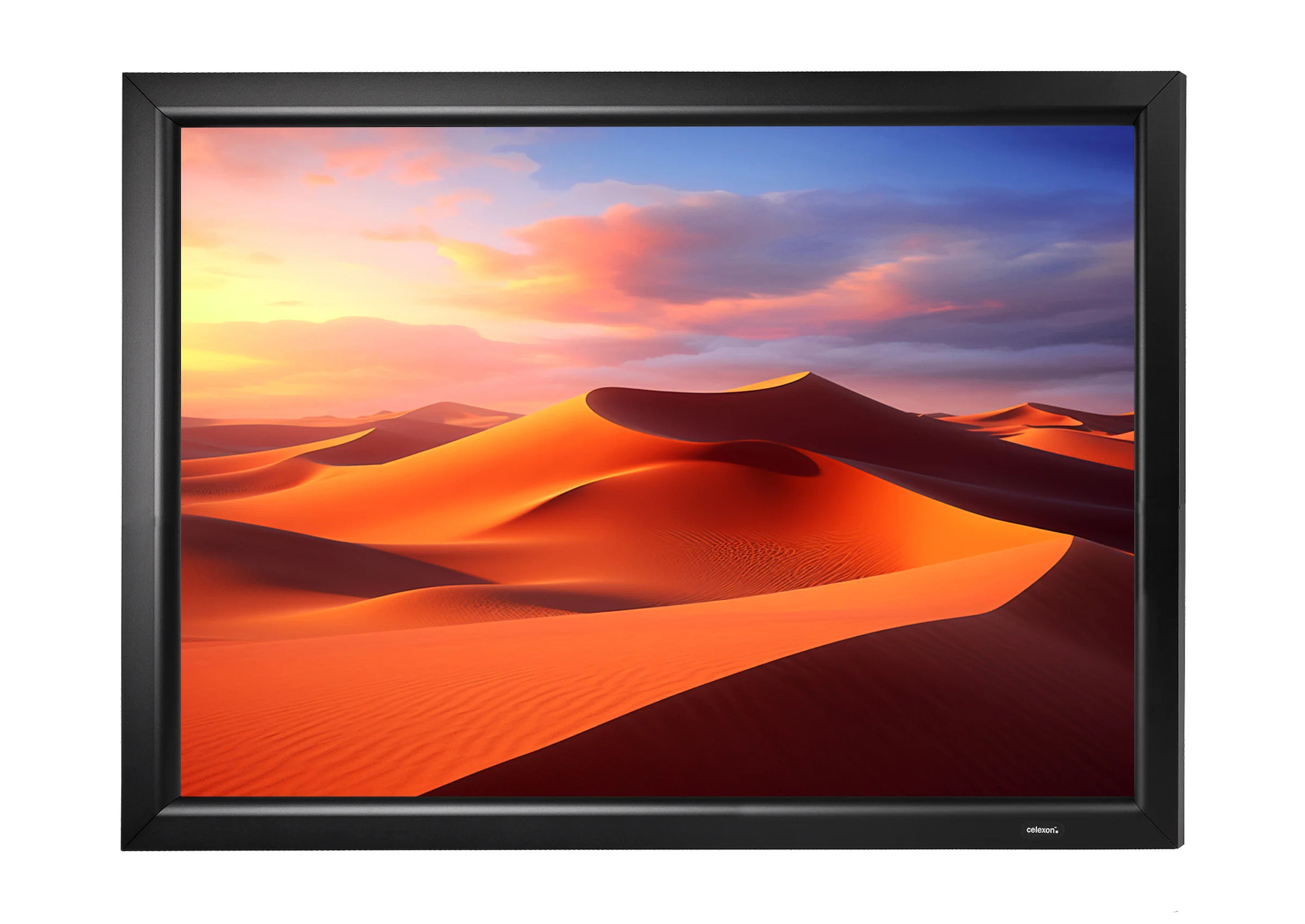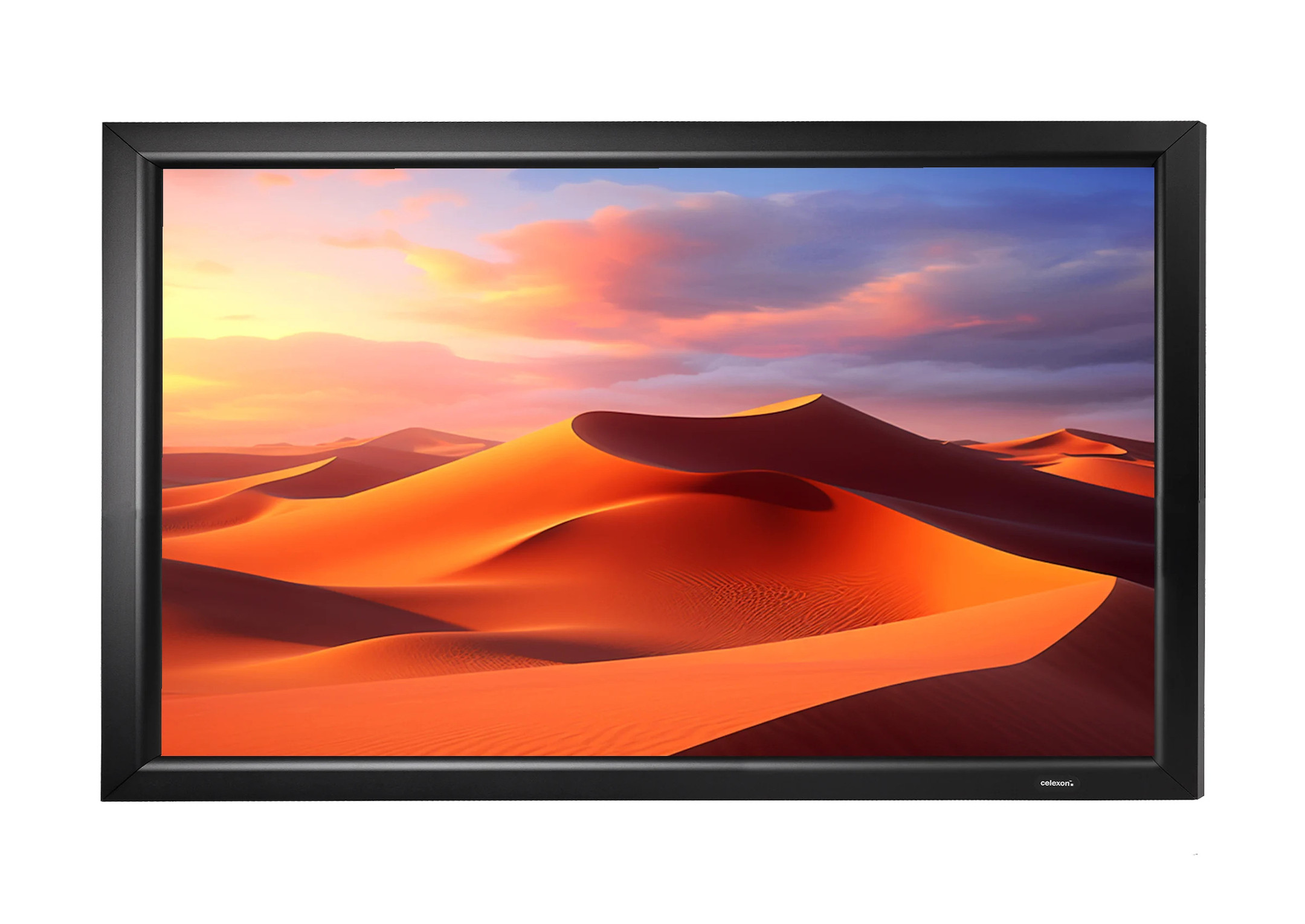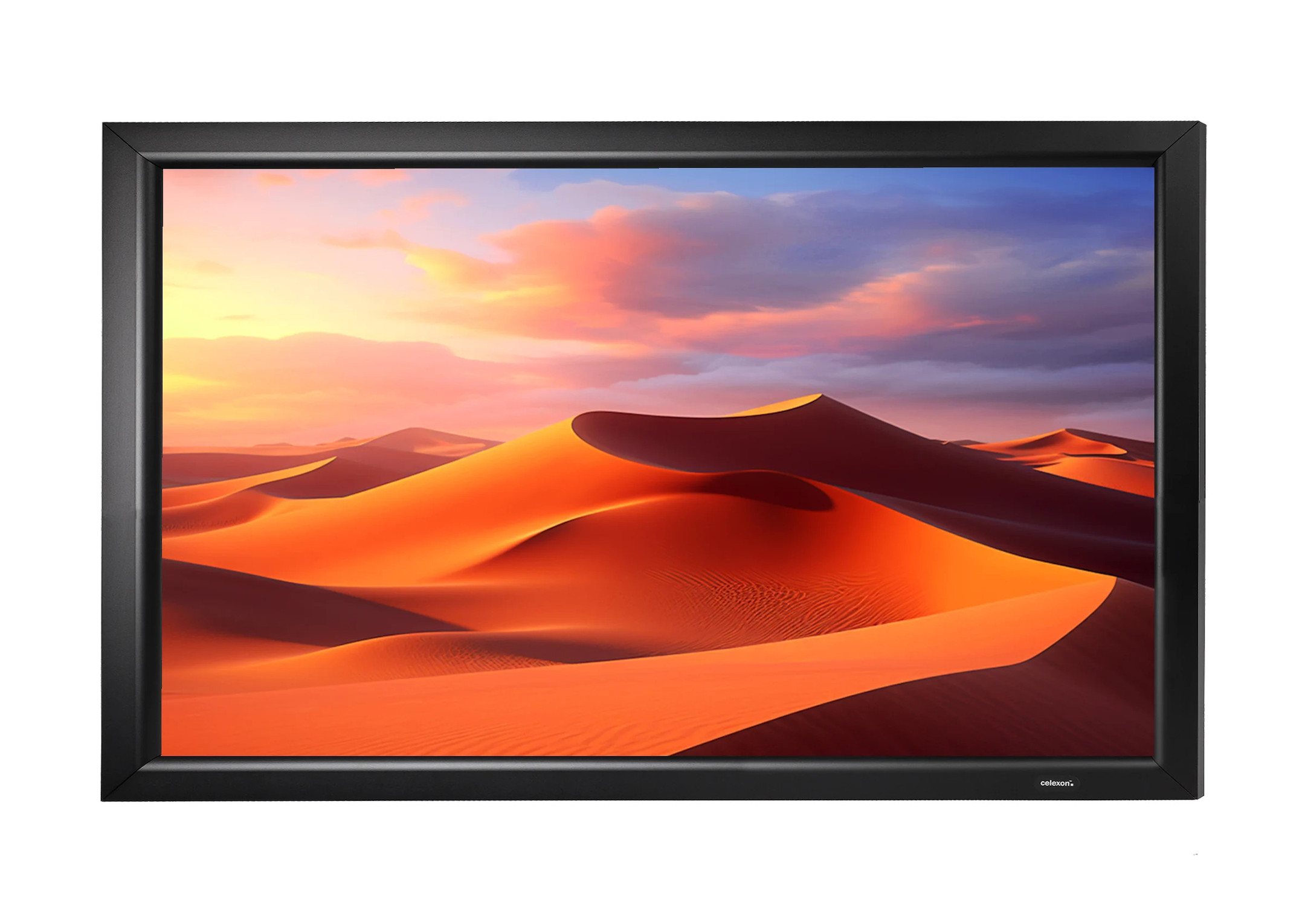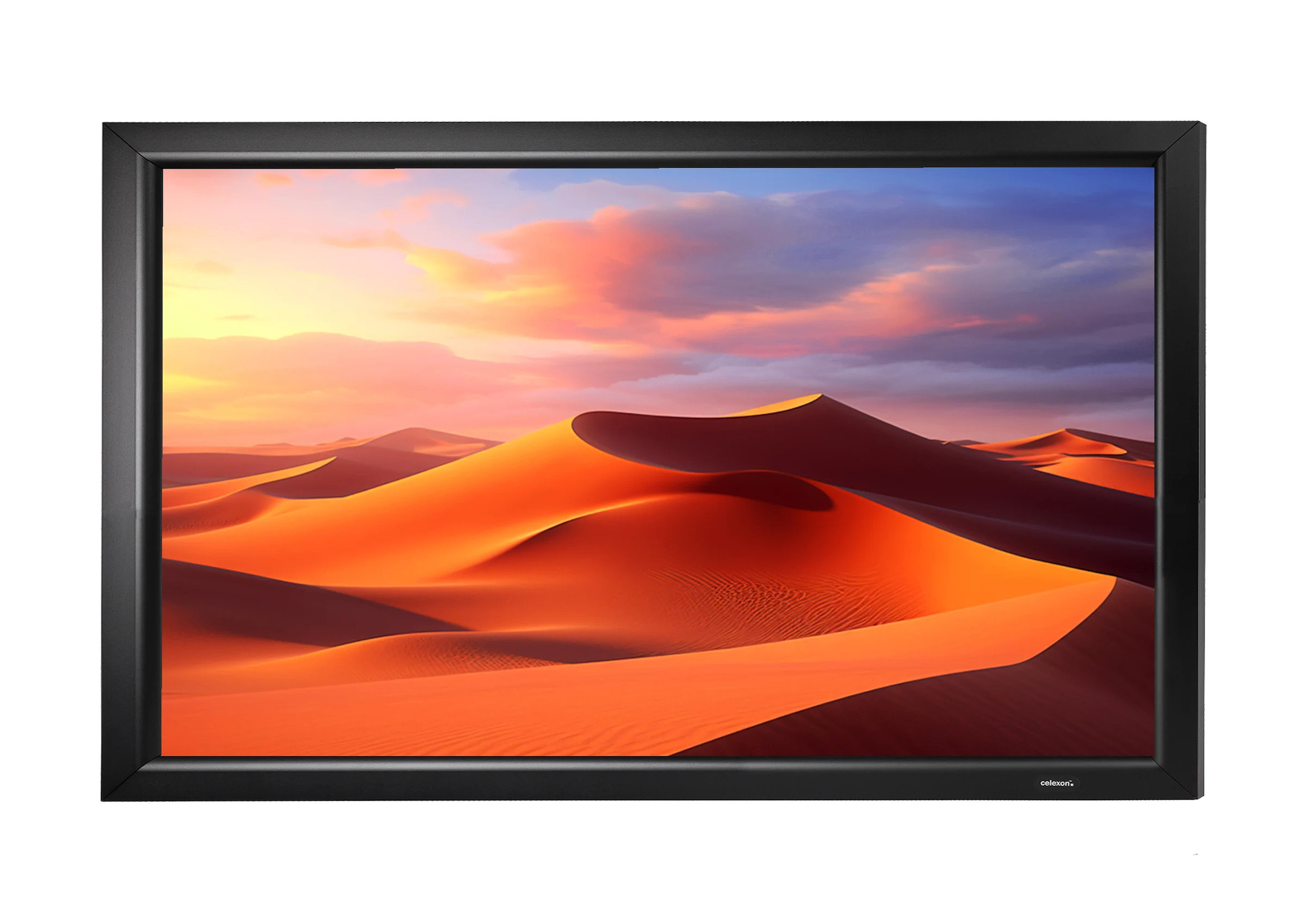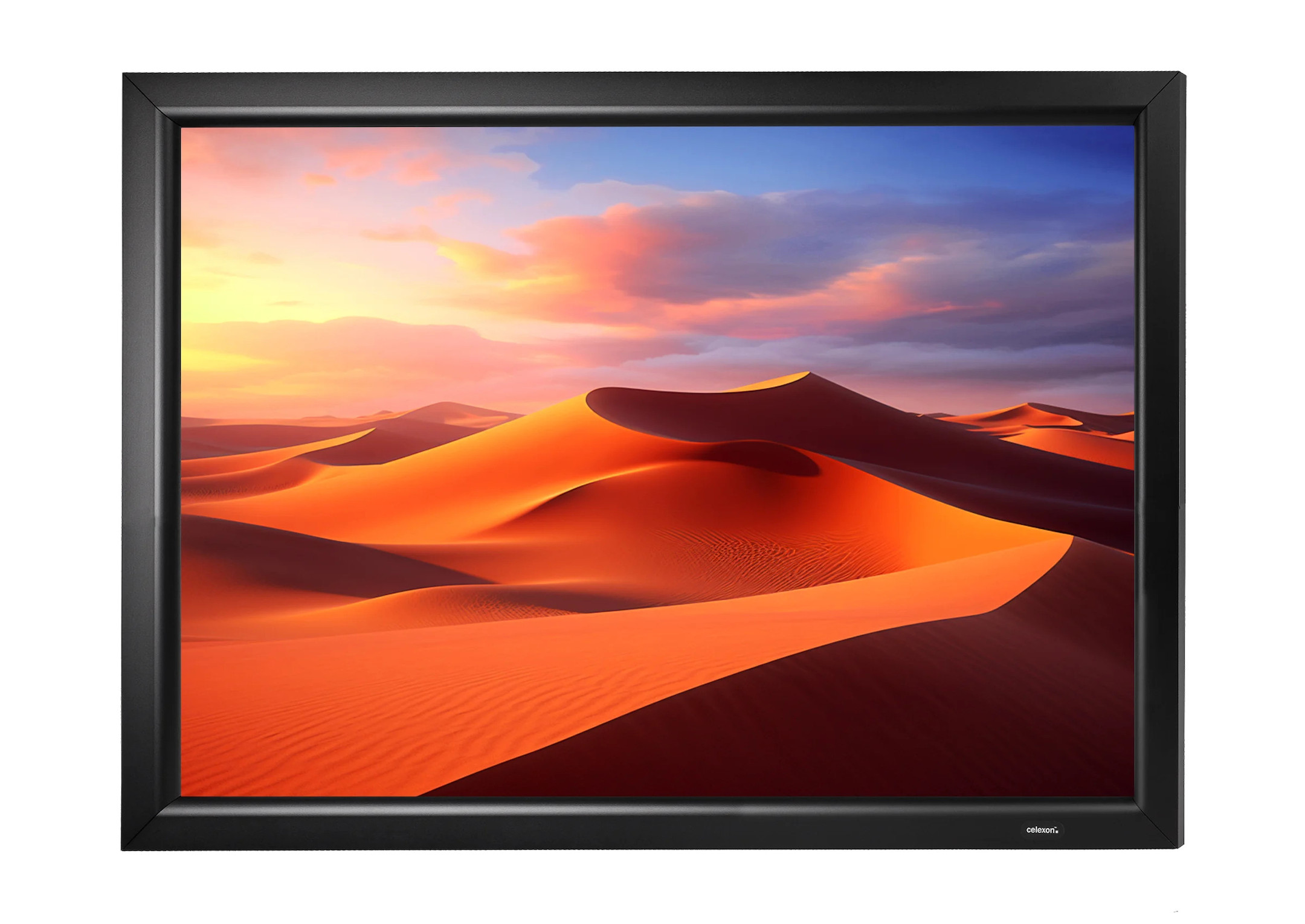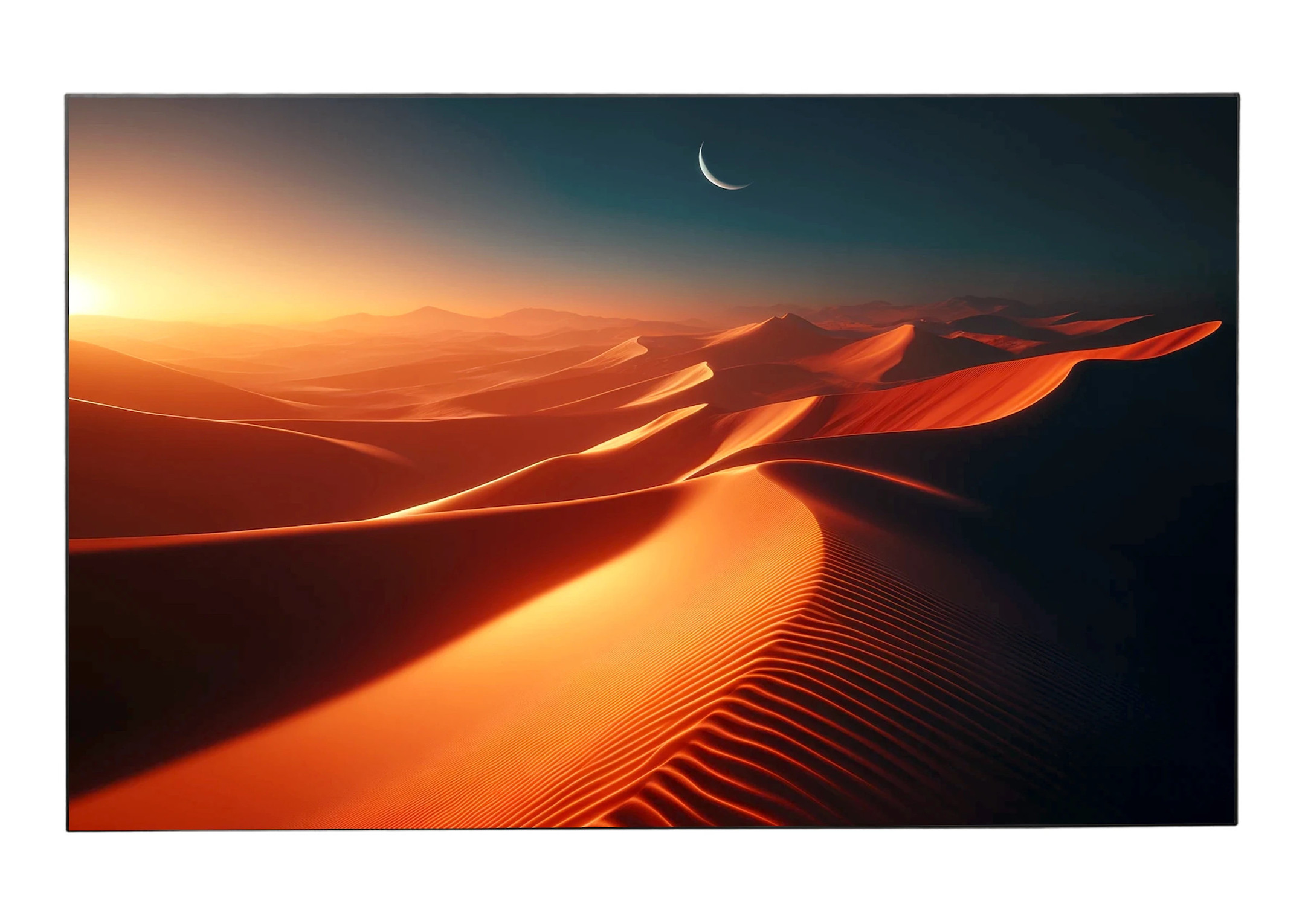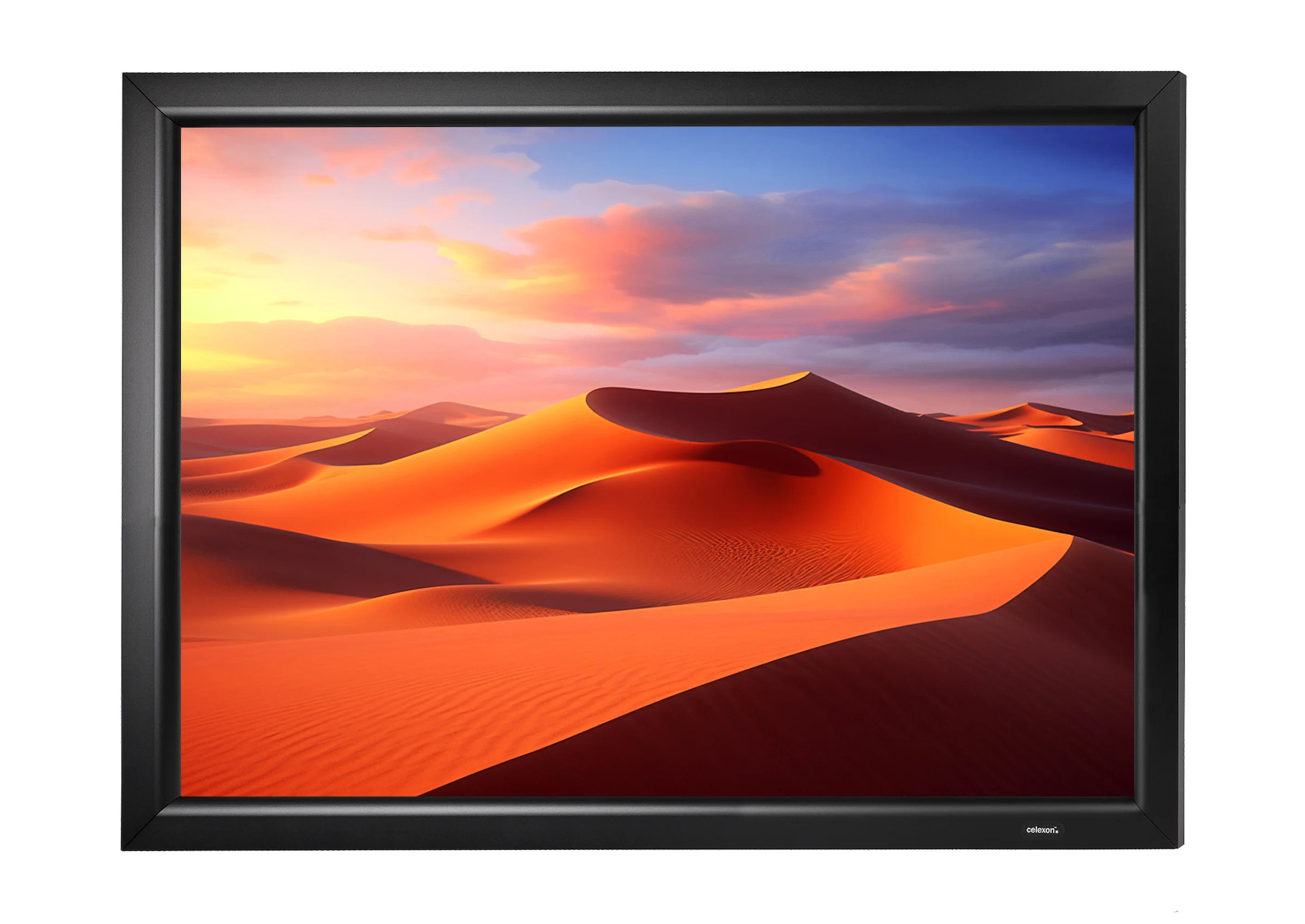celexon Frame HomeCinema-Series
Experience the ultimate home cinema experience with celexon Frame HomeCinema. The high-quality frame screens offer impressive picture quality and ensure crisp details and vivid colours. Easy installation allows for quick setup on the wall or ceiling. The series is not only suitable for private customers, but also for business customers with seminar or conference rooms. Complete your setup with the right accessories for a perfect home cinema experience. Immerse yourself in a world of captivating films, sports broadcasts and gaming sessions.

10 Products
Sort by:


